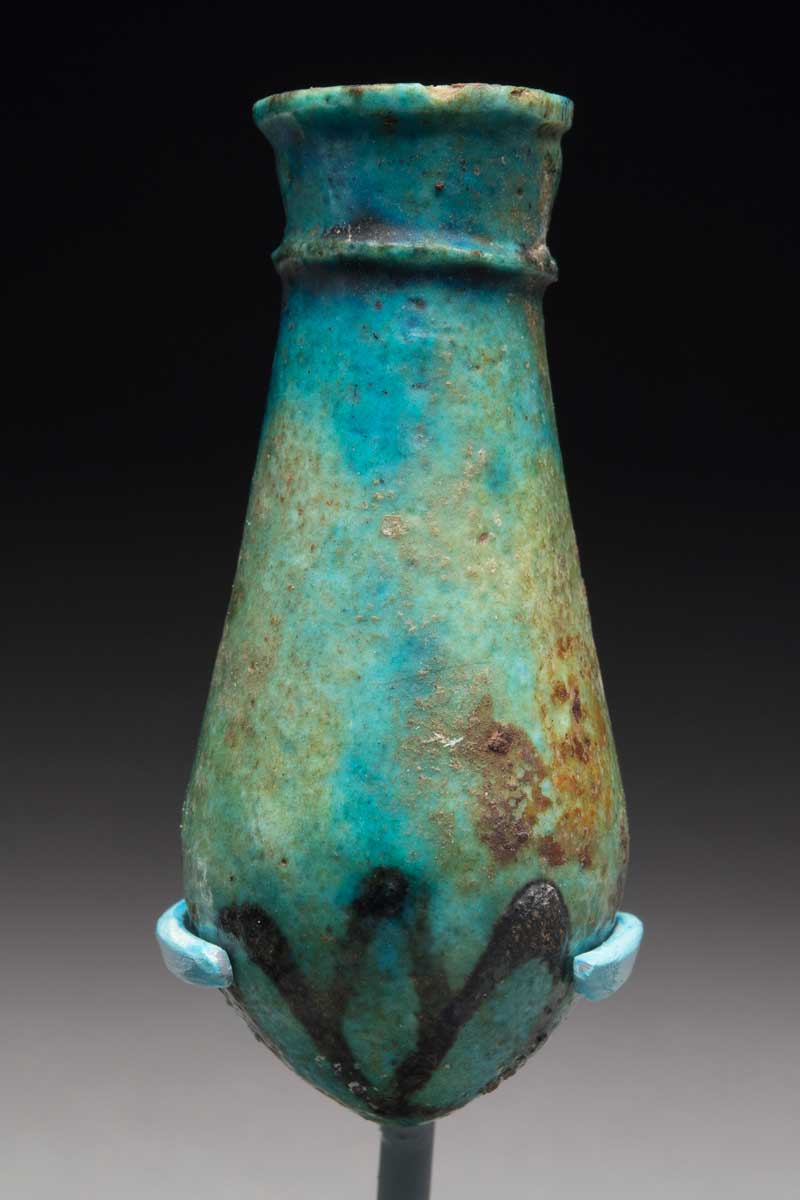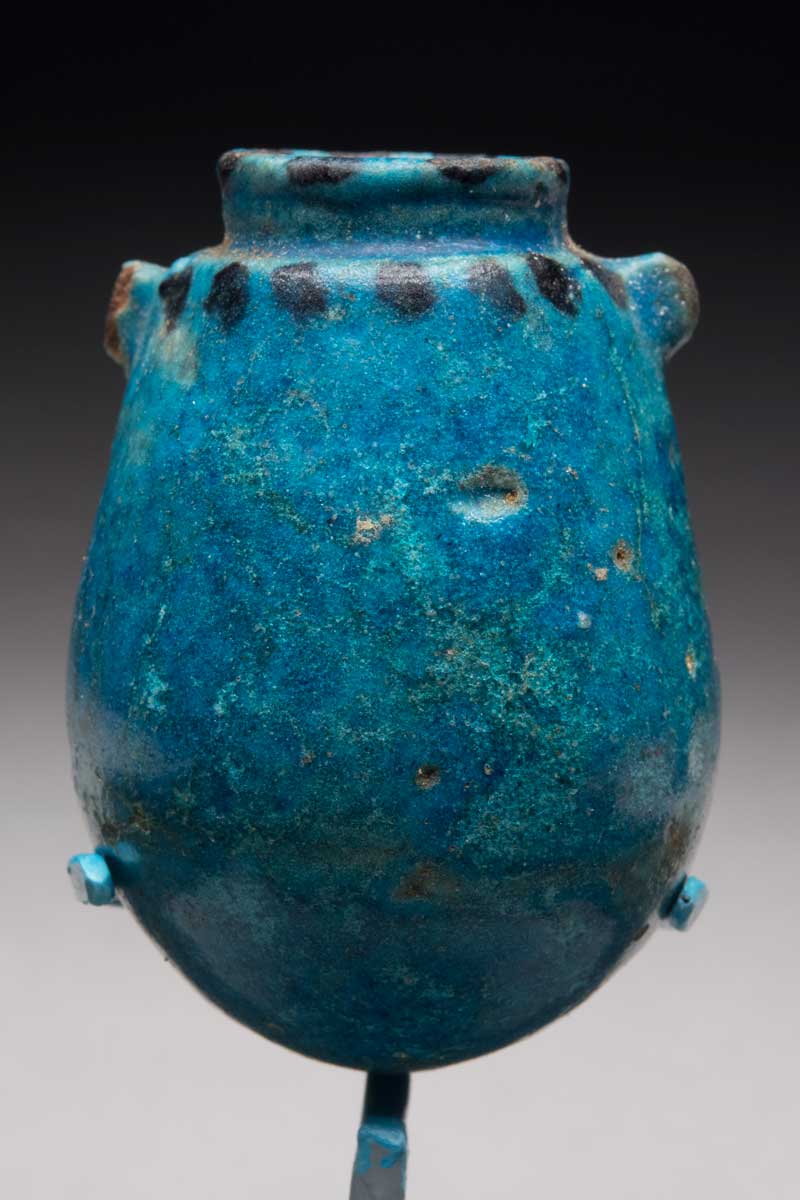Providing for the Afterlife: Ancient Egyptian works from Eton College
Faience Model Vessels
By Evan Smith, Jordan Poston, Meg Swaney and Sanchita Balachandran



Description
In ancient Egypt a model of something was just as effective as the thing it represented, and Egyptians often opted to include models in their burials rather than full-sized–and perhaps sometimes more expensive–objects. Such models were frequently made of faience, a material which itself had a wide array of symbolic associations. The Egyptian word for faience (tehenet) is the feminine form of the word (tehen) “to dazzle,” and the bright shining surfaces of these faience vessels are readily apparent. Their vivid greenish-blue color was also associated with regeneration. The small lotus chalice (ECM 1564) and the flask (ECM 456), each with lotus petals indicated in black around their bodies, take this symbolism further, as the blue lotus was associated with rebirth and often appears in banqueting scenes where copious amounts of wine were drunk, perhaps from full-sized versions of similar vessels. The black markings around the rim and shoulder of the small jar (ECM 430) with wide mouth, everted rim, and drop-shaped body with lug handles at shoulder may also represent some sort of vegetal motif. Many of these vessels likely represent objects made in a different material, perhaps ceramic or hard stone, the latter of which the Egyptians were especially skilled in crafting into fine vessels.

Technical Research
As examined by undergraduate students Evan Smith and Jordan Poston, all of these miniature vessels were hand-modeled in Egyptian faience paste, mostly by coiling and smoothing, and were glazed with copper-based colorants that provide the rich blue-green hue that most still retain. Most of the painted black lines on these objects were created with a manganese-rich colorant still detectable by x-ray fluorescence analysis (XRF). X-radiography of these tiny vessels also provided delightful details into their production, showing clearly how coils were used to form the faience paste into the desired shape, or how holes were drilled post-firing.
X-radiography, in combination with a study of the different glaze compositions using XRF provided an interesting insight into more recent repairs to at least one of these objects. In the case of ECM 453, an x-ray provides evidence that the object is actually composed of two different objects that were attached and covered with a black wax-like band to conceal the repair. XRF of the two different parts of the vessel suggested significantly different glaze compositions, with lead present in the glaze of the lower portion of the object, but missing in the upper portion. This further corroborates the finding that this object is a composite of two objects, which were possibly even manufactured hundreds of years apart in time as the addition of lead may suggest a glaze made in the Ptolemaic period.
